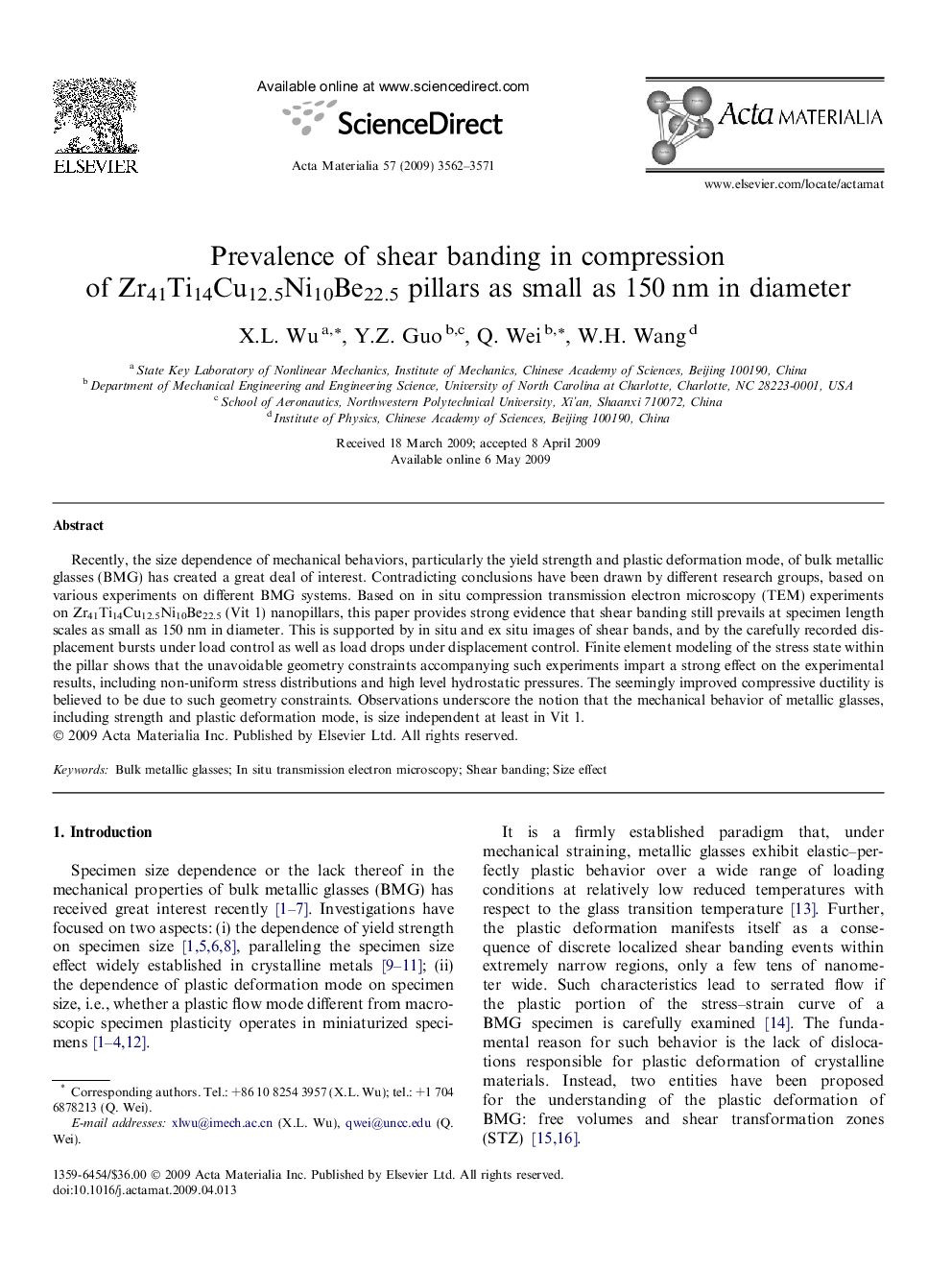| Article ID | Journal | Published Year | Pages | File Type |
|---|---|---|---|---|
| 1448317 | Acta Materialia | 2009 | 10 Pages |
Recently, the size dependence of mechanical behaviors, particularly the yield strength and plastic deformation mode, of bulk metallic glasses (BMG) has created a great deal of interest. Contradicting conclusions have been drawn by different research groups, based on various experiments on different BMG systems. Based on in situ compression transmission electron microscopy (TEM) experiments on Zr41Ti14Cu12.5Ni10Be22.5 (Vit 1) nanopillars, this paper provides strong evidence that shear banding still prevails at specimen length scales as small as 150 nm in diameter. This is supported by in situ and ex situ images of shear bands, and by the carefully recorded displacement bursts under load control as well as load drops under displacement control. Finite element modeling of the stress state within the pillar shows that the unavoidable geometry constraints accompanying such experiments impart a strong effect on the experimental results, including non-uniform stress distributions and high level hydrostatic pressures. The seemingly improved compressive ductility is believed to be due to such geometry constraints. Observations underscore the notion that the mechanical behavior of metallic glasses, including strength and plastic deformation mode, is size independent at least in Vit 1.
